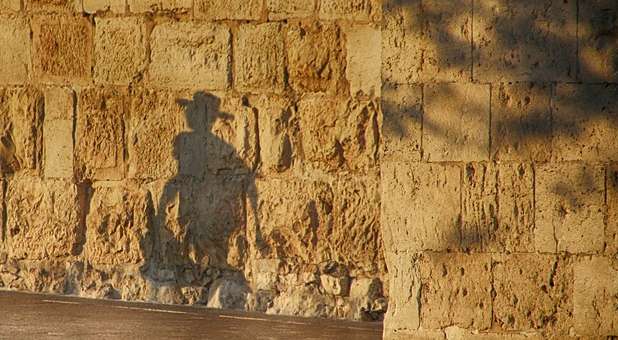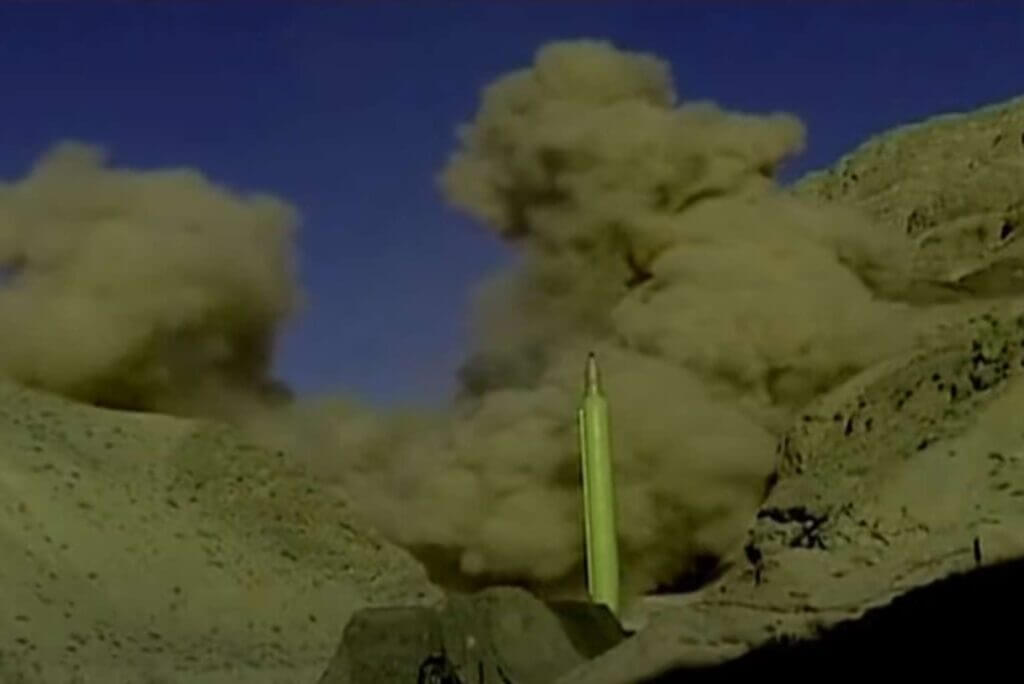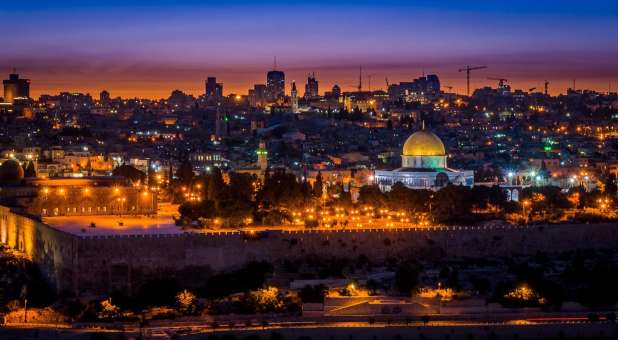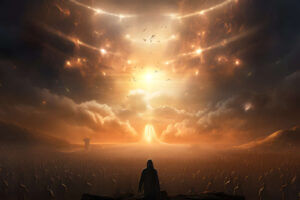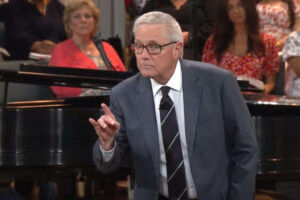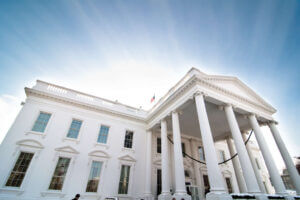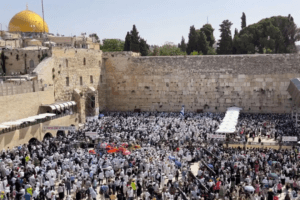One of the most amazing sites in Jerusalem is also one that is overlooked by more than 99.9 percent of tourists, and sadly, even educated tour guides don’t realize its significance. Millions of tourists pass through this site every year. In fact, I would guess that less than 1 percent of 1 percent realize that when they are in the Upper Room, they are actually standing in a building that became the first Messianic synagogue.
The very first Jewish believers did not see a need for a synagogue of their own. They all continued to go to the traditional synagogue—the only place to hear the Scriptures read on a weekly basis—and then, they met together on the first day of the week (believed to be Saturday evening, not Sunday—a work day in Israel). These meetings were held in homes, and they also met daily in the Temple Courts as well (Acts 2:46).
However, persecution grew intense in the 60s. It is believed that Yaakov (James), despite being one of the most respected Jews in Jerusalem, was martyred through a conspiracy led by the Pharisees in A.D. 62. The book of Hebrews encourages the Jewish believers to stand strong in the face of persecution (Heb. 12:1-4).
Messianics Flee Jerusalem
Then in the late 60s, the Zealots, a Jewish sect seeking independence from Rome, rebelled. The Roman armies surrounded Jerusalem and prepared to raze it to the ground. The Messianic Jews were warned my angel to escape according to the historian Eusebius. They remembered the words of Yeshua.
When you see Jerusalem surrounded by armies, then you know that its desolation has drawn near. Then let those who are in Judea flee to the mountains, and let those who are in the city depart, and let not those who are in the country enter it (Luke 21:20-21).
The second coming was just around the corner, they assumed. They fled across the Jordan River. After Jerusalem was destroyed and the Zealots were thoroughly defeated, the Messianic community returned to Jerusalem.
An Amazing Discovery
Now, this is where our story gets interesting.
In 1948, during Israel’s War of Independence, a shell exploded near the traditional site of King David’s tomb (we now know that is not his tomb) and the site of the Upper Room. In 1951, an Israeli archeologist, Jacob Pinkerfeld, was tasked with repairing the damage. In doing so, he discovered the original floor of the building and an alcove. Bargil Pixner, the renowned Benedictine monk, biblical scholar and archaeologist, writes,
“Similar niches at similar heights above floor level have been found in ancient synagogues and were presumably used to house an ark for Torah scrolls.”
In other words, this room, the Upper Room, was actually an ancient synagogue. The question is, was it always a synagogue and if not, when did it become a synagogue? Some claim that the Roman General Titus spared the area during his conquest in A.D. 70. However, it is more likely—since we know that the entire city was destroyed—that it was rebuilt into a synagogue after the A.D. 70 war. We know that in the time of Yeshua, 40 years prior, it was not a synagogue, but merely a room.
Pinkerfeld concurred that this was indeed a synagogue, unlike churches that faced the east, the building was oriented toward the temple or where the temple once stood. Pinkerfeld was correct; it was a synagogue, but his conclusion that it could not be a church, or for our purposes, a gathering of Yeshua believers, because it did not face east is erroneous. Churches didn’t begin to face east until the second half of the fourth century, according to Bixler.
Not Facing the Temple, but …
Bixler claims he erred also in his assumption that the building was facing the temple. It was an obvious assumption, but when actually measured, the niche or the alcove that was discovered is slightly off. Instead of facing the temple, it faces a most interesting place.
Just think for a minute. You have returned to Jerusalem. The city is in ruins. The year is A.D. 72 or 73. The temple is gone! Please understand the significance of this. The temple was the center of Jewish life and religion. Even in the lives of first-century Messianic Jews, the temple was very significant. The believers met there for worship and teaching as well as for outreach (Acts 3-4, 5:25). This must have been a huge blow. In addition, the second temple was the most amazing structure of its time. It was a marvel and a wonder. And now it was in ruins.
The writer of Hebrews warned of this when he said that that which “is decaying and growing old is ready to vanish away” (Heb. 8:13) Scholars have wrongly assumed he was speaking of the entire Old Covenant, when in fact he was referring to the sacrificial system—as a few years later the temple would be burned to the ground.
A Self-Imposed Curse Forces Them out of Traditional Synagogue
So, without a temple, the Messianic Jews return to the other highly significant place—the Upper Room as their headquarters. Facing rejection from traditional Jews, they rebuild it into their own synagogue. In just a few years, the Pharisees, under Gamaliel II, added a ‘blessing’ to the Amida—prayed three times a day—that calls all Messianic Jews heretics and curses them. In fact, while we know the Messianic Jews returned in A.D. 72-73, it is possible they did not build their synagogue until this self-imposed curse became a part of Amida and forced them out of the synagogue.
A Most Awesome Orientation
But when it came time to orient the niche, they concluded not to point it in the direction of where the temple once stood, but rather in the direction of its replacement.
In fact, the synagogue’s orientation is toward what is presently the Church of the Holy Sepulchre, which, at the time the synagogue was built, was believed to be the site of Jesus’ tomb and of his crucifixion at Golgotha.
How powerful is that! Without a temple, the source of sacrifice and forgiveness, they rightly discerned that the new source of everlasting forgiveness and redemption was Golgotha. But should it point towards the place where he was crucified and uttered the words, “It is finished,” or toward the place of His resurrection, where the proof of redemption lie? How about both? He was buried where he was crucified.
“Now in the place where He was crucified there was a garden, and in the garden was a new tomb in which no one had ever been buried” (John 19:41).
More Proof!
If we needed any more proof that this building was the first Jewish synagogue erected for the exclusive use of Messianic Jews, we have it in the form of suppressed graffiti that Pinkerfeld found under the later floors (he removed several floors to get to the original). The graffiti was only later published and claims that the building was erected in the first century:
One graffito has the initials of the Greek words which may be translated as “Conquer, Savior, mercy.” Another graffito has letters which can be translated as “O Jesus, that I may live, O Lord of the autocrat.”
The fact that the words are in Greek is evidence that it was later used by Gentile Christians after all Jews were barred from the city in A.D. 135. This was in response to the last Jewish rebellion. The Roman Emperor Hadrian expelled all the Jews and turned Jerusalem into a pagan city. He even built a Temple to Venus on the place where Yeshua was crucified.
But how did these Gentiles know for sure that this was the place of the Upper Room and the first Messianic Synagogue?
Though Hadrian banned all Jews from Jerusalem in 135 CE, Christians not of Jewish ancestry could and did live in Jerusalem from Hadrian’s time on. Eusebius even preserves a list of the Gentile bishops of Jerusalem.
The clear evidence supports the idea that the Messianic Jews returning from a self-imposed exile after the Roman conquest of Jerusalem, built the first Messianic Synagogue in the former Upper Room and oriented it to face Golgotha—the place of Yeshua’s execution and resurrection.
See an error in this article?
To contact us or to submit an article



